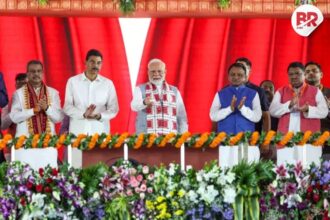
India is building its third satellite launch pad at the Satish Dhawan Space Centre in Sriharikota, and it is expected to be fully ready by March 2029, according to the Department of Space (DoS).
This Third Launch Pad (TLP) is an important project for India’s growing space program. It will be used mainly for the Next Generation Launch Vehicle (NGLV) and also serve as a backup for heavy-lift rockets like LVM3.

Construction Timeline
- May 2028 – Civil works (main building and structures) will be completed
- July 2028 – Fluid systems and fuel storage will be installed
- September 2028 – Launch pad systems will be set up
- March 2029 – Launch pad will be fully operational
So far, surveys and soil studies have been completed, and the government is reviewing tenders for the construction work. The project will involve Indian private companies and small industries to support the Make in India and self-reliance goals.
Why a Third Launch Pad Is Needed
India currently has two launch pads:
- First Launch Pad – Designed for PSLV rockets, not suitable for newer cryogenic engines.
- Second Launch Pad – Upgraded for LVM3 and Gaganyaan missions, but if it stops working, all heavy launches will be delayed.
The new NGLV will be 91 metres tall, more than twice the height of LVM3, and will need special infrastructure because of its size, power, and fuel requirements.
Read more: NISAR Mission a Success: NASA-ISRO Satellite Launched into Orbit by GSLV-F16
Future Missions
The TLP will play a key role in:
- Human spaceflights under Gaganyaan
- Chandrayaan Moon missions
- Deep space exploration
- Possible Indian space station launches
Former ISRO officials have stressed that the TLP is essential for India’s long-term space goals and will be the main site for many future ambitious missions.












